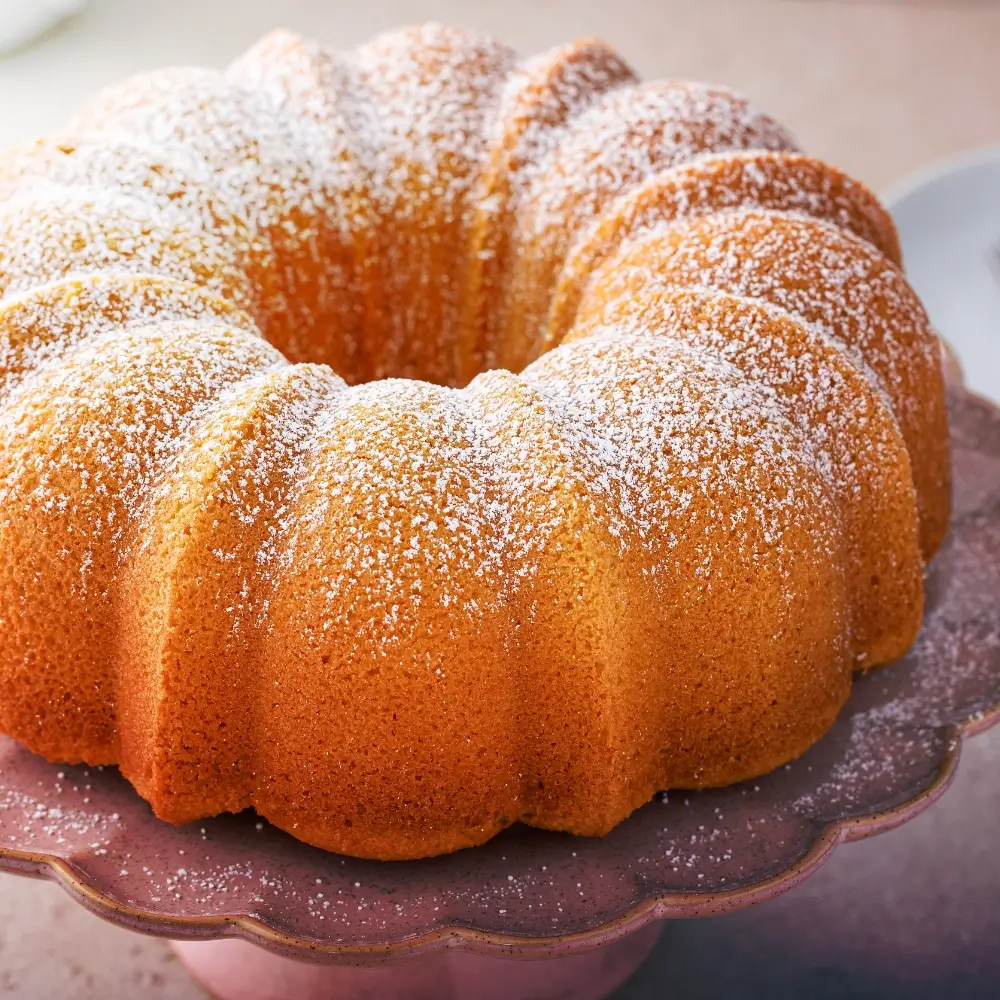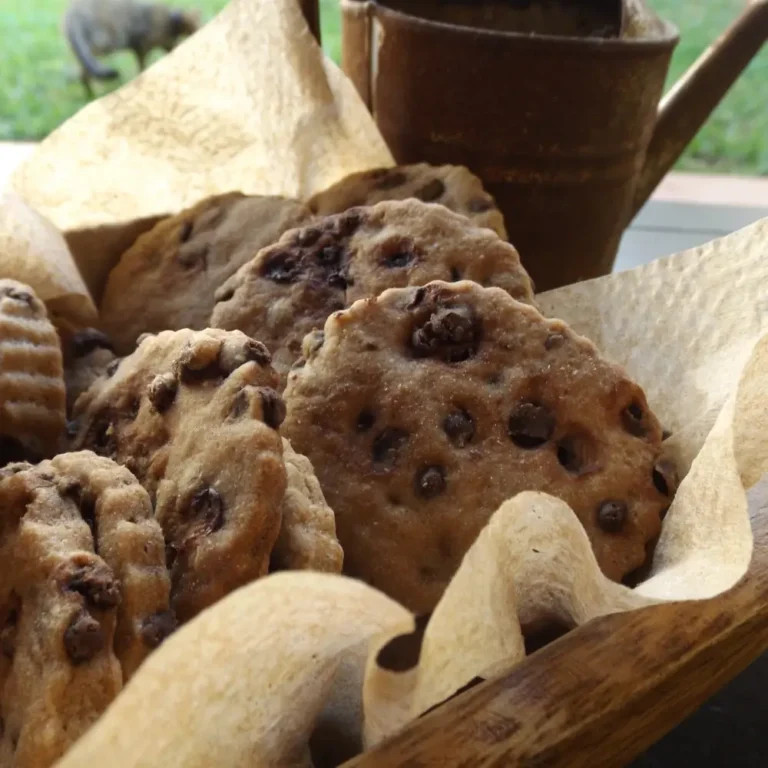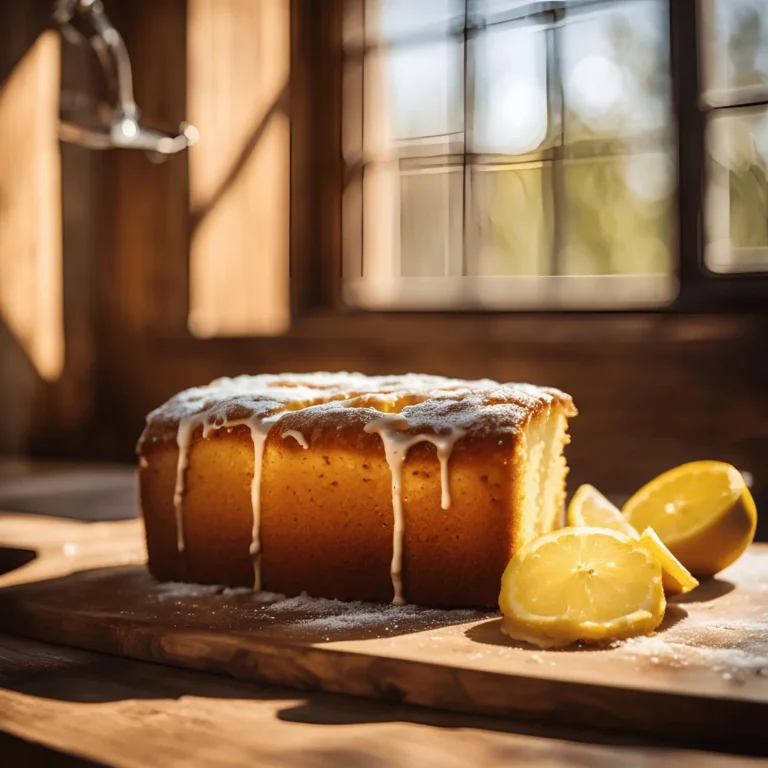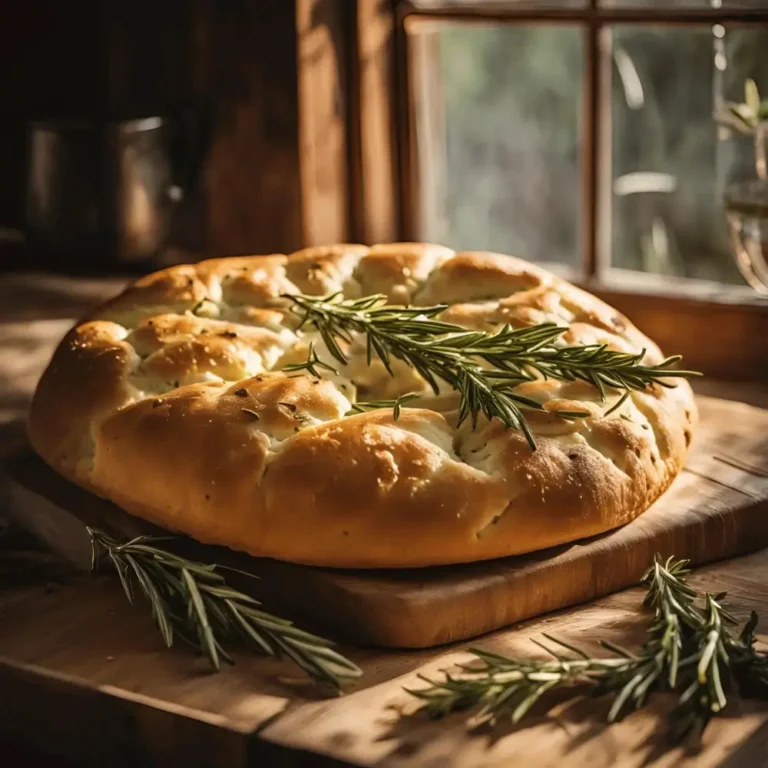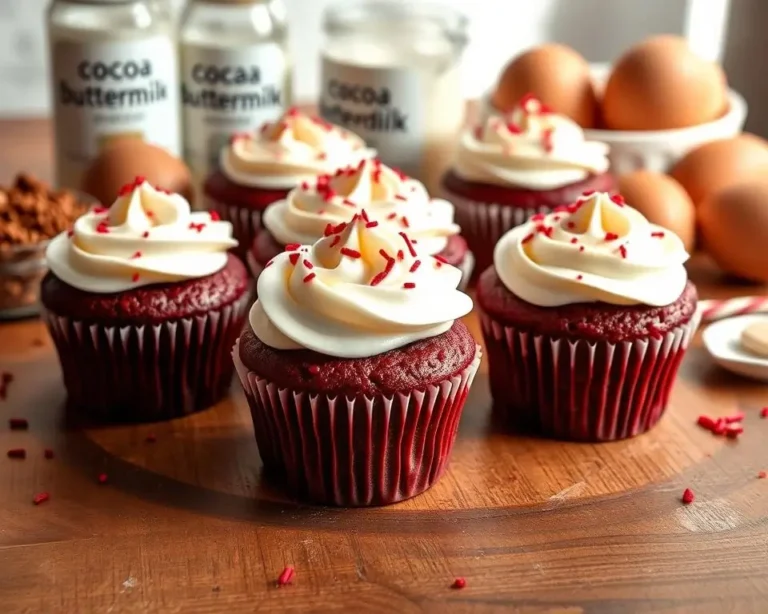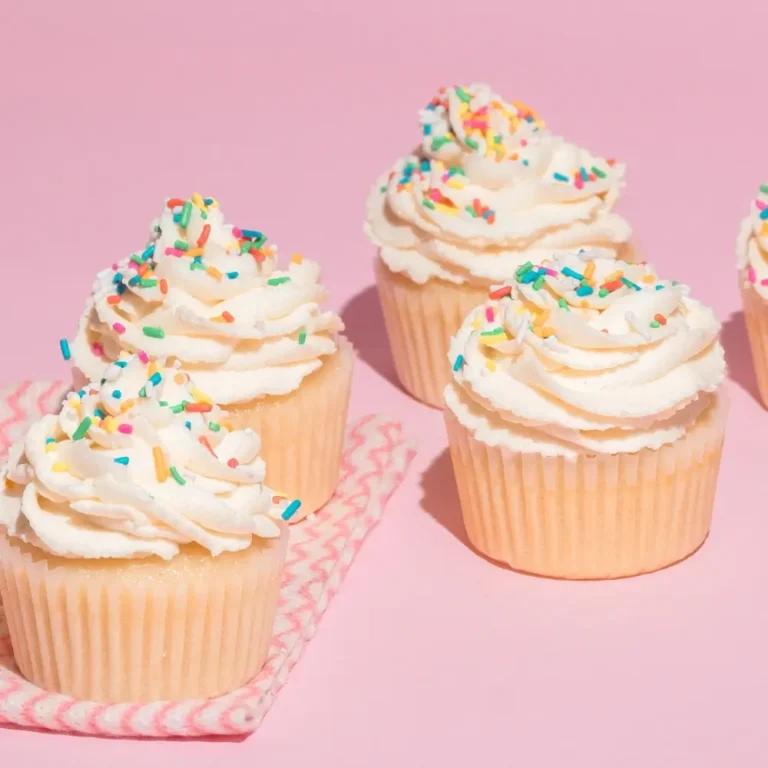Vanilla Pound Cake
Get ready to enjoy the rich flavors of a classic vanilla pound cake. You can make it in your own home with love and care. Our expert tips will help you create a moist vanilla pound cake recipe that will wow your family and friends. Whether you’re new to baking or have experience, our step-by-step guide will ensure a delicious result every time.
We’ll cover everything from the history of vanilla pound cake to the essential ingredients and tools you need. You’ll learn the best tips and tricks for making a mouthwatering vanilla pound cake. Our aim is to give you a complete guide to making the best homemade vanilla pound cake with a simple yet effective recipe.
Introduction to Vanilla Pound Cake
In this article, you’ll find all you need to know about baking the perfect vanilla pound cake. We focus on giving you a clear and easy-to-follow recipe, along with expert advice for the best results. So, let’s start this culinary journey and make a delicious homemade vanilla pound cake that you’ll cherish for years.
Key Takeaways
- Learn the secrets to making a moist and delicious vanilla pound cake
- Discover the perfect vanilla pound cake recipe for any occasion
- Get expert guidance on essential ingredients and required kitchen tools
- Understand the history and evolution of traditional vanilla pound cake
- Find tips and tricks for achieving a perfect texture and flavor in your vanilla pound cake
- Create a mouthwatering homemade vanilla pound cake that will impress your family and friends
Table of Contents
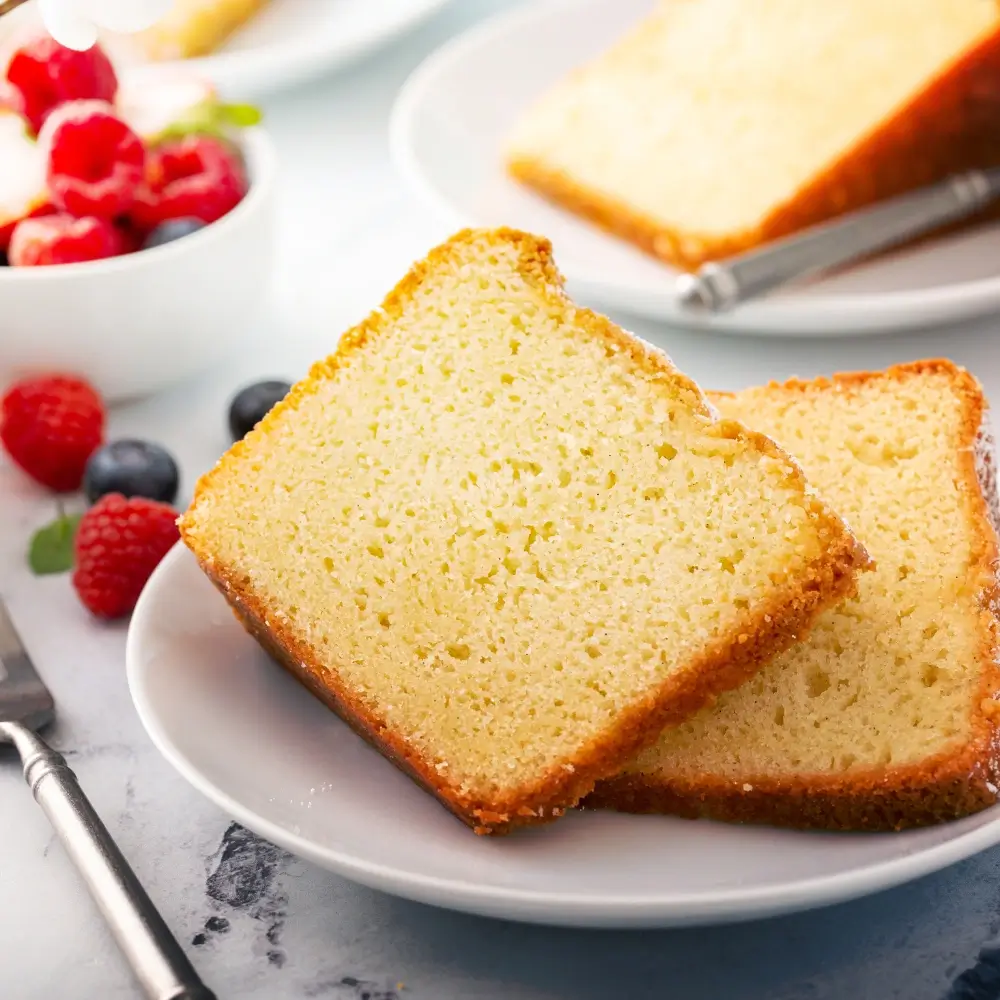
The History of Traditional Vanilla Pound Cake
Ever wondered how traditional vanilla pound cake came to be? It all started in the 1700s. Back then, the recipe used a pound each of flour, butter, sugar, and eggs. This mix created the classic “pound cake” we love today.
As time went on, pound cake recipes changed. But vanilla remained the top choice. Adding vanilla makes a homemade or old-fashioned pound cake truly special. The story of vanilla in pound cake is quite interesting.
Origins of the Pound Cake Name
The name “pound cake” reflects its simple yet rich ingredients. With a pound of each basic ingredient, it was a treat. Exploring pound cake history shows how it’s been loved for generations, with each baker adding their own twist.
Evolution Through American Baking History
American baking history is rich with pound cake stories. From colonial times to now, it’s a beloved American treat. Vanilla’s addition was a big change, making pound cake even more popular. Today, you can still enjoy the classic recipe or try new flavors.
Why Vanilla Became the Classic Flavor
So, why vanilla for pound cake? Vanilla’s unique taste adds depth and richness. As you explore pound cake, you’ll see vanilla and traditional ingredients make it special. Whether you’re new to baking or experienced, trying traditional vanilla pound cake is a must.
Essential Ingredients for Your Vanilla Pound Cake
To make a delicious vanilla pound cake, you need the right ingredients. High-quality ingredients are key for a moist and flavorful cake. This includes all-purpose flour, unsalted butter, granulated sugar, large eggs, pure vanilla extract, and salt.
Here are the essential ingredients for a classic vanilla pound cake recipe:
- 2 3/4 cups of all-purpose flour
- 1 teaspoon of salt
- 1 cup of unsalted butter, softened
- 1 3/4 cups of granulated sugar
- 4 large eggs, at room temperature
- 2 teaspoons of pure vanilla extract
With these ingredients, you can make a vanilla pound cake that’s both moist and flavorful. Make sure to measure your ingredients accurately for the best results. With practice, you can master making a delicious vanilla pound cake, perfect for any occasion.
| Ingredient | Quantity |
|---|---|
| All-purpose flour | 2 3/4 cups |
| Salt | 1 teaspoon |
| Unsalted butter | 1 cup |
| Granulated sugar | 1 3/4 cups |
| Large eggs | 4 |
| Pure vanilla extract | 2 teaspoons |
Required Kitchen Tools and Equipment
To make a delicious pound cake, you need the right tools and equipment. Having the right tools ensures your cake turns out perfectly. A well-equipped kitchen is key when making cake pound.
You’ll need a stand mixer, a hand mixer, and a whisk. These tools help mix ingredients well, making your cake smooth and creamy. You’ll also need measuring cups and spoons for accurate ingredient measurements.
Mixing Equipment Essentials
Mixing equipment is crucial for a pound cake. A stand mixer is best for heavy mixing. A hand mixer works too, but it takes more effort and time.
Baking Pans and Measurements
The right pan is essential for baking a pound cake. You need a 9×5-inch loaf pan for the perfect cake. Grease the pan well to prevent sticking.
Temperature Tools and Timers
A thermometer and a timer are also key tools. A thermometer ensures your oven is at the right temperature. A timer helps you keep track of baking time.
| Tool | Description |
|---|---|
| Stand Mixer | Essential for heavy mixing |
| Hand Mixer | Alternative to stand mixer |
| Whisk | For mixing small quantities |
| Measuring Cups and Spoons | For accurate measurements |
| 9×5-inch Loaf Pan | For baking the pound cake |
| Thermometer | For ensuring the right oven temperature |
| Timer | For keeping track of the baking time |
Choosing the Right Type of Vanilla
Choosing the right vanilla is key to a delicious vanilla pound cake. You want a high-quality vanilla for a rich, creamy flavor. Using a vanilla glaze can add more flavor and moisture.
There are many types of vanilla, like extract, beans, and paste. Each has its own flavor and use. Vanilla extract adds a subtle taste, while beans offer a stronger, creamier flavor. Vanilla paste is easy to use and convenient.
Madagascar and Tahitian vanilla are popular for their rich flavor. They’re perfect for a vanilla glaze. Always check the label for “high-quality” and “pure” to get the best taste.
- Vanilla extract: great for adding a subtle vanilla flavor
- Vanilla beans: provide a more intense, creamy flavor
- Vanilla paste: convenient and easy-to-use
By picking the right vanilla and making a delicious glaze, you can make an unforgettable dessert.
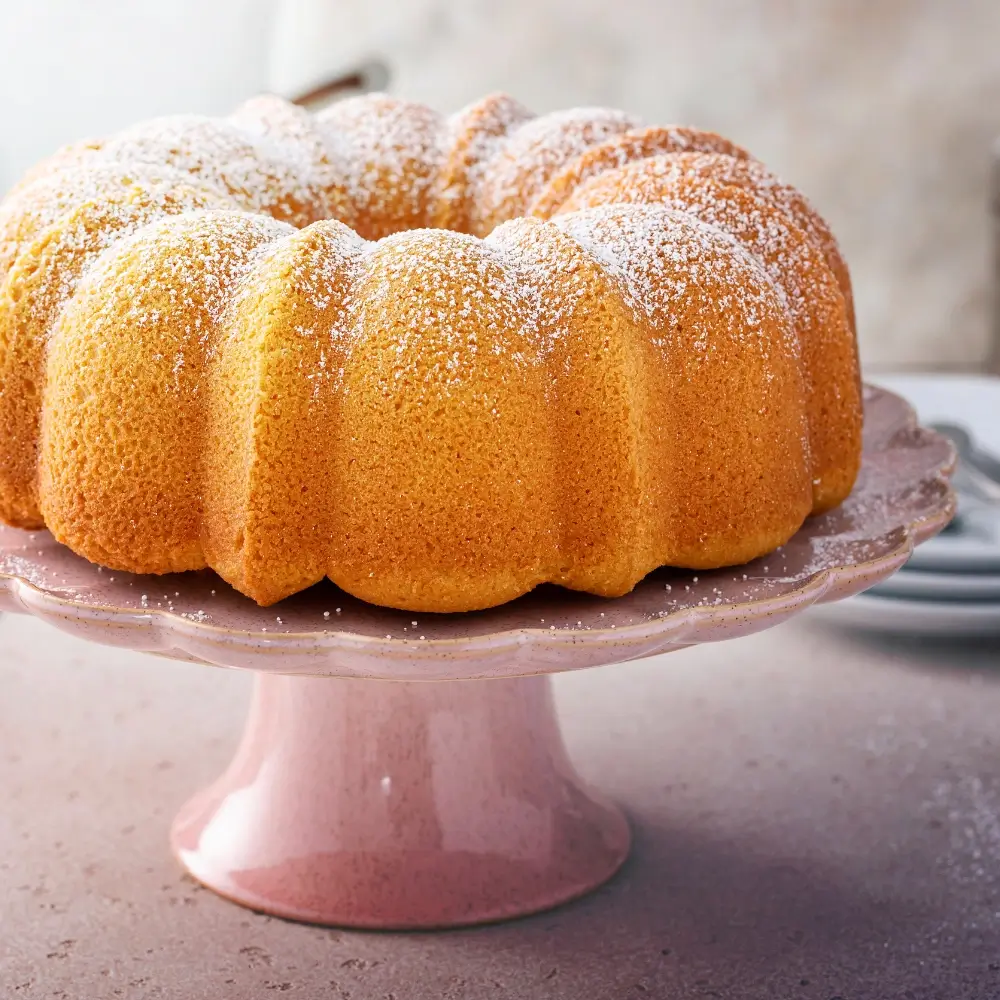
The Perfect Vanilla Pound Cake Recipe
To make a delicious vanilla pound cake, you need the right ingredients and a simple recipe. A moist vanilla pound cake recipe includes flour, sugar, eggs, and butter. These ingredients, when mixed right, create a rich and flavorful cake perfect for any occasion.
Before baking, it’s key to understand the importance of accurate measurements and preparation time. A vanilla pound cake recipe needs about 30 minutes of preparation and 45-50 minutes of baking. The baking temperature and time can vary, so keep an eye on your cake.
Ingredient Measurements
The success of a vanilla pound cake depends on the right ingredient amounts. Here are some basic measurements to get you started:
- 2 cups of all-purpose flour
- 1 cup of granulated sugar
- 1/2 cup of unsalted butter, softened
- 4 large eggs, at room temperature
- 2 teaspoons of pure vanilla extract
Preparation Time and Baking Temperature
With all your ingredients ready, it’s time to prepare your cake. Preheat your oven to 325°F (165°C) and grease a 9×5-inch loaf pan. Follow these simple steps and a moist vanilla pound cake recipe to enjoy a delicious homemade cake in no time.
Proper Mixing Techniques for Pound Cake
Making a homemade pound cake requires the right mixing techniques. This old fashioned recipe needs careful attention for the perfect texture and taste. Begin by creaming the butter and sugar until they’re light and fluffy. Then, beat in the eggs one at a time.
A stand mixer can help a lot in this step, making mixing efficient and thorough. But if you prefer to mix by hand, use a big bowl and a whisk or spoon. The goal is to mix each ingredient well before moving on to the next.
- Cream the butter and sugar until light and fluffy
- Beat in the eggs one at a time
- Fold in the flour gently to avoid overmixing
By following these steps and using the right techniques, you’ll make a delicious homemade pound cake. It’s sure to impress, whether it’s an old fashioned or modern version. Remember, the key to success is in the mixing. So, take your time, be patient, and enjoy making this special dessert.
Understanding the Creaming Method
To make a delicious pound cake, you need to understand the creaming method. This technique is key for adding air to the batter. It makes the cake light and fluffy. Getting the creaming method right is crucial for a simple pound cake.
The creaming method involves beating the butter and sugar together until they are light and fluffy. This process breaks down the sugar and adds air to the batter. To get the perfect texture, the butter must be at the right temperature. If it’s too cold, it won’t cream properly. If it’s too warm, it will be too soft.
Butter Temperature Guidelines
The ideal temperature for the butter is around 72°F to 76°F (22°C to 24°C). At this temperature, the butter is soft and pliable. This makes it easy to cream with the sugar. You can check the butter’s temperature by touching it gently with your finger. If it feels slightly soft and yields to pressure, it’s ready to use.
Sugar Integration Process
Once the butter is at the right temperature, you can start adding the sugar. It’s important to add the sugar gradually, beating well after each addition. This prevents the sugar from forming lumps and ensures it’s evenly distributed. When making a pound cake, you can use granulated sugar or a mix of granulated and brown sugar for a richer flavor.
| Ingredient | Quantity |
|---|---|
| Butter | 1 cup (200g) |
| Granulated sugar | 1 3/4 cups (450g) |
| Brown sugar | 1/4 cup (50g) |
By following these guidelines and using the right ingredients, you can create a delicious and moist pound cake. It’s perfect for any occasion. Whether you’re making a simple pound cake or a more elaborate dessert, mastering the creaming method is essential.
Best Practices for Baking Your Pound Cake
To get the perfect vanilla pound cake, follow some key steps. You want it to be moist, flavorful, and look great. First, preheat your oven to the right temperature. This step is crucial for the cake’s texture and consistency.
Choosing the right baking pan is also important. It affects the cake’s shape and size. Make sure the pan fits your recipe and grease it well to prevent sticking. Also, don’t open the oven door while baking. This can make the cake sink or become uneven.
- Preheat your oven to the correct temperature
- Use the right size and type of baking pan
- Avoid opening the oven door during baking
- Let the cake cool completely before serving
By following these tips, you’ll make a delicious vanilla pound cake. Be patient and let it cool completely. This ensures it sets well and keeps its flavor and texture. With these guidelines and your favorite recipe, you’ll make cake pound that’s perfect for any event.
| Step | Description |
|---|---|
| 1. Preheat oven | Preheat your oven to the correct temperature for your vanilla pound cake recipe |
| 2. Prepare baking pan | Choose the right size and type of baking pan and grease it properly |
| 3. Bake the cake | Bake the cake without opening the oven door, and let it cool completely before serving |
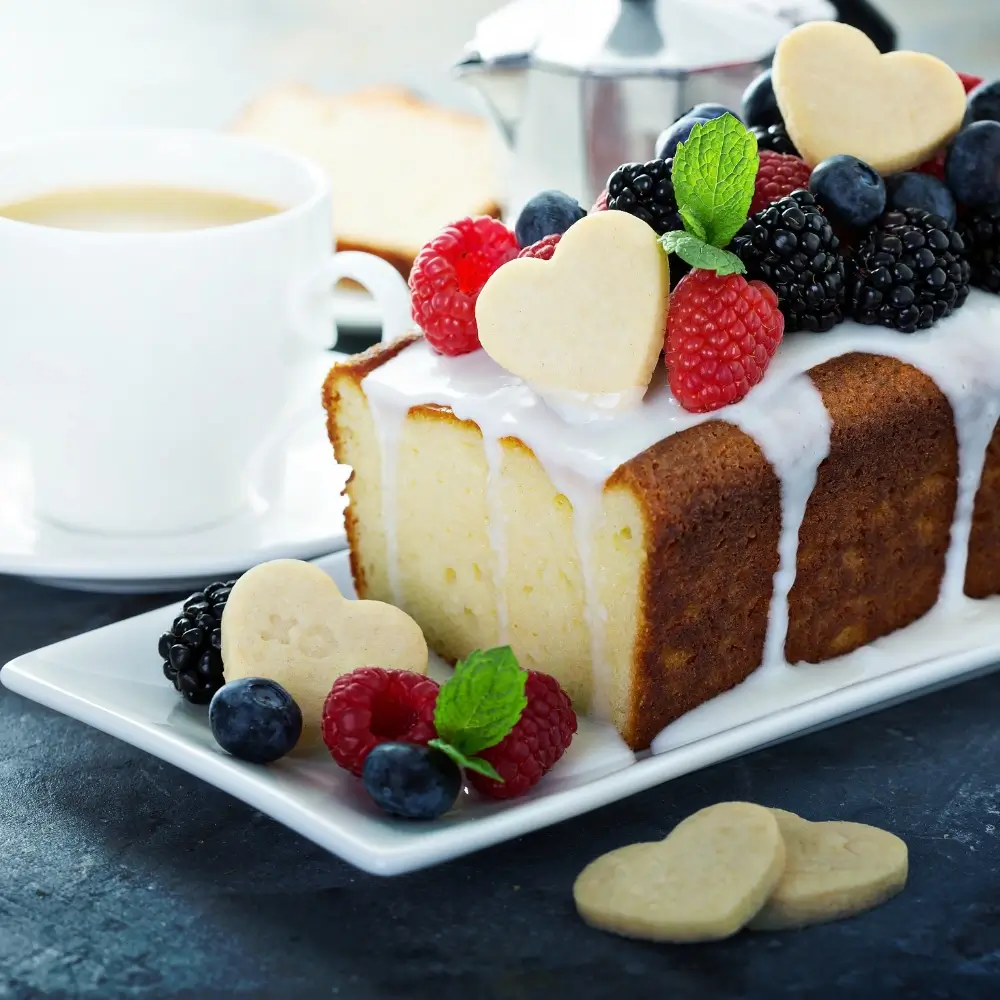
Creating the Perfect Vanilla Glaze
To complete your vanilla pound cake, a vanilla glaze is key. The right glaze can make your cake taste and look amazing. It’s perfect for any special occasion.
A classic vanilla glaze recipe has powdered sugar, vanilla extract, and milk or cream. You can tweak the glaze by changing the amount of each ingredient. For a thicker glaze, use less milk or cream. For a thinner one, add more.
Classic Vanilla Glaze Recipe
Here’s a simple recipe to get you started:
- 1 cup powdered sugar
- 2 tablespoons milk or cream
- 1 teaspoon vanilla extract
Mix the ingredients until smooth. Then, adjust the consistency and flavor as needed. Adding a pinch of salt can balance the sweetness.
Alternative Glazing Options
Want to try something different? Use almond or coconut extract for a unique twist. Or, add a splash of liqueur like rum or Grand Marnier for a grown-up dessert. A vanilla glaze is the perfect finish for your homemade dessert.
| Glaze Type | Ingredients | Flavor Profile |
|---|---|---|
| Classic Vanilla | Powdered sugar, vanilla extract, milk or cream | Sweet, creamy, and rich |
| Almond Vanilla | Powdered sugar, almond extract, vanilla extract, milk or cream | Nutty, sweet, and creamy |
| Coconut Vanilla | Powdered sugar, coconut extract, vanilla extract, milk or cream | Tropical, sweet, and creamy |
Troubleshooting Common Pound Cake Problems
When you make a homemade pound cake, like an old fashioned one, you might face some issues. Even with a great recipe and techniques, problems can still happen. We’ll look at how to fix a dense texture, cracks, and uneven rising.
A dense pound cake can come from overmixing or the wrong flour. To fix this, mix ingredients just until they combine. Use high-quality all-purpose flour. Cracks and splits can be stopped by baking at the right temperature and time.
Dealing with a Dense Texture
- Check your mixing technique to avoid overmixing
- Use the right type of flour for your homemade pound cake
- Don’t overbake your old fashioned pound cake
Preventing Cracks and Splits
To stop cracks and splits, bake in a well-preheated oven. Try a water bath for even baking. These tips will help you make a moist, delicious old fashioned pound cake for any event.
Storage and Serving Tips
After baking and cooling your pound cake, it’s key to store it right. This keeps it fresh and soft. You can store it at room temperature, in the fridge, or freezer. For room temperature storage, wrap it tightly in plastic wrap or foil to avoid drying.
To serve, slice your cake and enjoy with a glaze or other desserts. Here are some tips:
- Store your pound cake in an airtight container to maintain freshness
- Refrigerate your pound cake for up to 5 days or freeze for up to 2 months
- Slice your pound cake just before serving to prevent drying out
- Consider serving your pound cake with a vanilla glaze or paired with fresh fruit
There are many ways to serve your simple pound cake. You can enjoy it alone, with coffee or tea, or as a base for other desserts. With the right storage and serving, your pound cake will last for days.
| Storage Method | Shelf Life |
|---|---|
| Room Temperature | 3-5 days |
| Refrigeration | 5-7 days |
| Freezing | 2 months |
Variations on the Classic Recipe
Want to try something new with your vanilla pound cake? You can add different flavors and ingredients to make it unique. Try making a marble pound cake by adding chocolate or other flavors to the batter.
For a twist, add lemon or orange zest to the batter for a citrusy taste. Or, add cinnamon or nutmeg for a holiday flavor. Use different types of vanilla, like vanilla beans or extract, to change the taste. This way, you can make a vanilla pound cake that’s truly yours.
Marble Pound Cake Version
To make a marble pound cake, split the batter in two. Add cocoa powder to one half and keep the other plain. Then, mix the two batters together to get a marbled look.
Citrus-Enhanced Options
Adding lemon or orange zest or extract can make your cake bright and refreshing. It’s a great way to add a new flavor to your vanilla pound cake.
Holiday Variations
Make your vanilla pound cake special for the holidays. Add cinnamon or nutmeg for a warm, spicy taste. Use holiday decorations like holly or snowflakes to make it look festive.
| Variation | Ingredients | Instructions |
|---|---|---|
| Marble Pound Cake | Cocoa powder, vanilla extract | Divide batter in half, add cocoa powder to one half, swirl together |
| Citrus-Enhanced | Lemon or orange zest, citrus extract | Add zest or extract to batter, mix well |
| Holiday Variation | Cinnamon, nutmeg, holiday decorations | Add spices to batter, decorate with holiday-themed decorations |
Making Your Pound Cake Ahead of Time
Making a homemade pound cake ahead of time is super convenient. It’s perfect for the holiday season when you’re short on time. You can freeze the batter or bake the cake and store it.
Freezing the batter is a smart move. Just mix the batter, put it in a container or bag, and freeze it for up to 2 months. Then, thaw it in the fridge overnight before baking.
- Prepare the batter according to your recipe
- Pour the batter into an airtight container or freezer bag
- Store the batter in the freezer for up to 2 months
- Thaw the batter overnight in the refrigerator when you’re ready to bake
Another option is to bake the cake and then store it. After baking and cooling, store it in a container at room temperature for 3 days. Or, wrap it tightly and freeze it for 2 months. This way, you can enjoy your cake whenever you like, without spending hours baking.
| Storage Method | Storage Time |
|---|---|
| Airtight container at room temperature | Up to 3 days |
| Wrapped tightly and frozen | Up to 2 months |
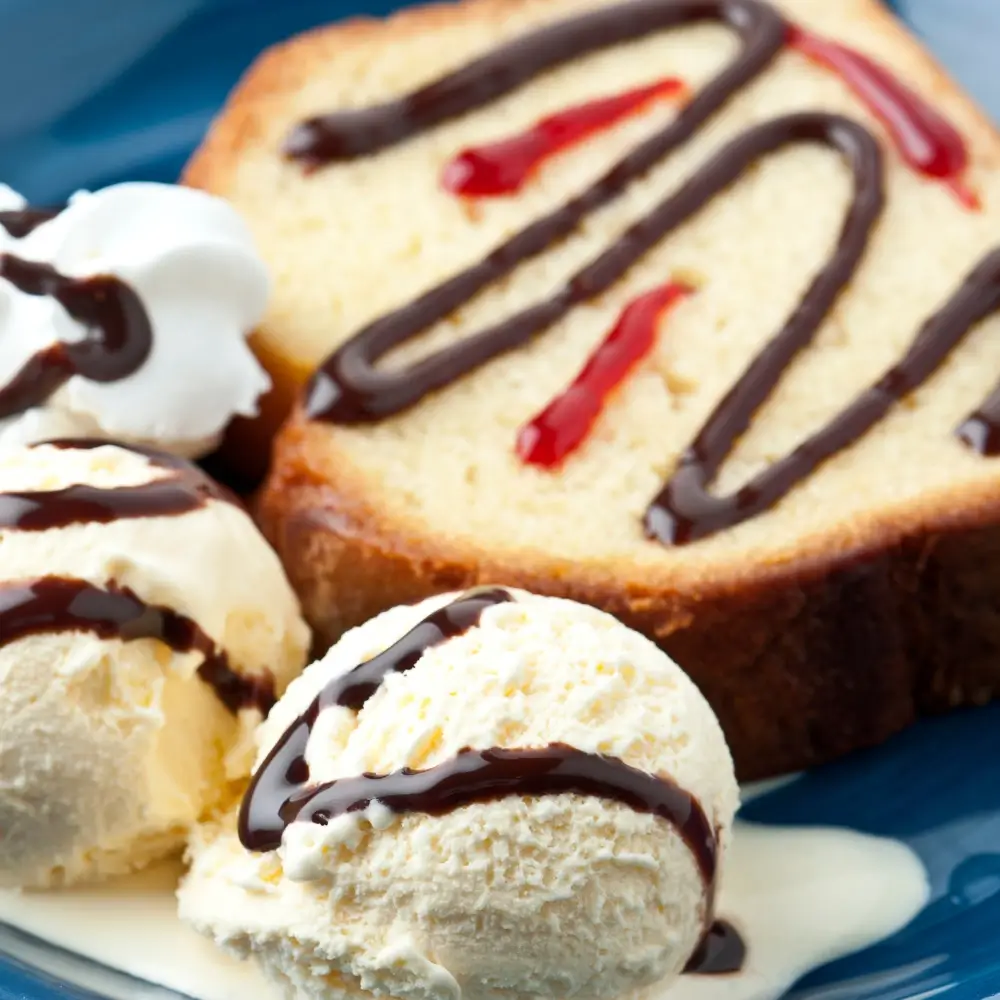
Decorating Your Vanilla Pound Cake
After baking a moist vanilla pound cake, it’s time to decorate. This is where you can add a personal touch. Whether it’s for a special occasion or just for your family, decorating makes your cake special.
There are many ways to decorate your vanilla pound cake. You can dust it with powdered sugar, add fresh flowers, or use a glaze. You can also try different frostings or icings to find your favorite.
Simple Garnishing Ideas
- Dusting with powdered sugar for a classic look
- Adding fresh flowers for a touch of elegance
- Using a glaze to add flavor and visual appeal
Special Occasion Decorations
For special occasions like weddings or birthdays, you might want more elaborate decorations. You could make a multi-tiered cake or use fondant for intricate designs. Adding sprinkles or edible glitter is also a great idea. Make sure it matches the occasion’s theme and style.
| Occasion | Decoration Ideas |
|---|---|
| Wedding | Multi-tiered cake, fondant decorations, fresh flowers |
| Birthday | Colorful frosting, sprinkles, edible glitter |
| Holiday | Seasonal-themed decorations, such as holly or snowflakes |
Conclusion
Baking the perfect vanilla pound cake is an art. It needs precision, patience, and a love for baking. By using the detailed recipes and tips, you can make a cake that will wow everyone.
The secret to a great vanilla glaze is using top-notch ingredients and mixing them right. Paying close attention to the baking process is also key. Feel free to try new flavors or add your own twist to this classic treat.
So, get your oven ready and start baking. With practice and the tips from this article, you’ll soon be making delicious vanilla pound cakes. They’ll become a favorite in your home. Happy baking!
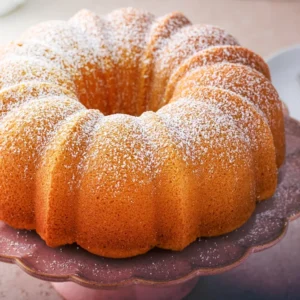
Vanilla Pound Cake
Ingredients
- 1 cup unsalted butter, softened (plus extra for greasing)
- 1 ¾ cups granulated sugar
- 4 large eggs
- 2 teaspoons pure vanilla extract
- 2 ½ cups all-purpose flour
- 2 teaspoons baking powder
- ½ teaspoon salt
- ½ cup whole milk
Instructions
- Preheat the Oven: Preheat your oven to 350°F (175°C). Grease and flour a standard loaf pan or line it with parchment paper.
- Cream Butter and Sugar: In a large bowl, use an electric mixer to cream the softened butter and sugar together until light and fluffy, about 3-4 minutes.
- Add Eggs and Vanilla: Beat in the eggs one at a time, ensuring each is fully incorporated before adding the next. Stir in the vanilla extract.
- Mix Dry Ingredients: In a separate bowl, whisk together the flour, baking powder, and salt.
- Combine Wet and Dry Ingredients: Gradually add the dry ingredients to the butter mixture, alternating with the milk. Begin and end with the dry ingredients, mixing until just combined. Do not overmix.
- Bake the Cake: Pour the batter into the prepared loaf pan and smooth the top with a spatula. Bake for 60-70 minutes, or until a toothpick inserted into the center comes out clean.
- Cool and Serve: Let the cake cool in the pan for 10 minutes before transferring it to a wire rack to cool completely. Slice and serve as desired.
Notes
- Add a glaze made with powdered sugar and milk for extra sweetness.
- Mix in chocolate chips, lemon zest, or almond extract for a twist.
FAQ:
What is the difference between pound cake and vanilla cake?
The main difference is in the texture and ingredients. A Vanilla Pound Cake is denser and richer, typically made with equal parts butter, sugar, eggs, and flour, while vanilla cake is lighter and fluffier, often using additional leavening agents.
What is pound cake called in the UK?
In the UK, Vanilla Pound Cake is generally referred to as “Sponge Cake” or “Butter Cake.” Though it shares similarities with the traditional pound cake, the UK version may differ slightly in texture and ingredients, but it maintains the same rich, buttery flavor.
What is pound cake formula?
The basic formula for a Vanilla Pound Cake is equal weights of butter, sugar, eggs, and flour. This ratio ensures a moist and dense texture that defines a classic pound cake.
Is pound cake the same as plain cake?
No, a Vanilla Pound Cake is richer and denser than a plain cake. The high butter content and lack of leavening agents make it distinct in texture and flavor.
Why is pound cake good?
A Vanilla Pound Cake is loved for its rich, buttery flavor and moist, dense texture. It’s versatile, easy to make, and pairs well with toppings like whipped cream or fresh fruit.
What type of cake is the most moist?
A Vanilla Pound Cake is among the most moist cakes due to its high butter and egg content. Proper baking techniques and the correct ratio of ingredients ensure its tender texture.
